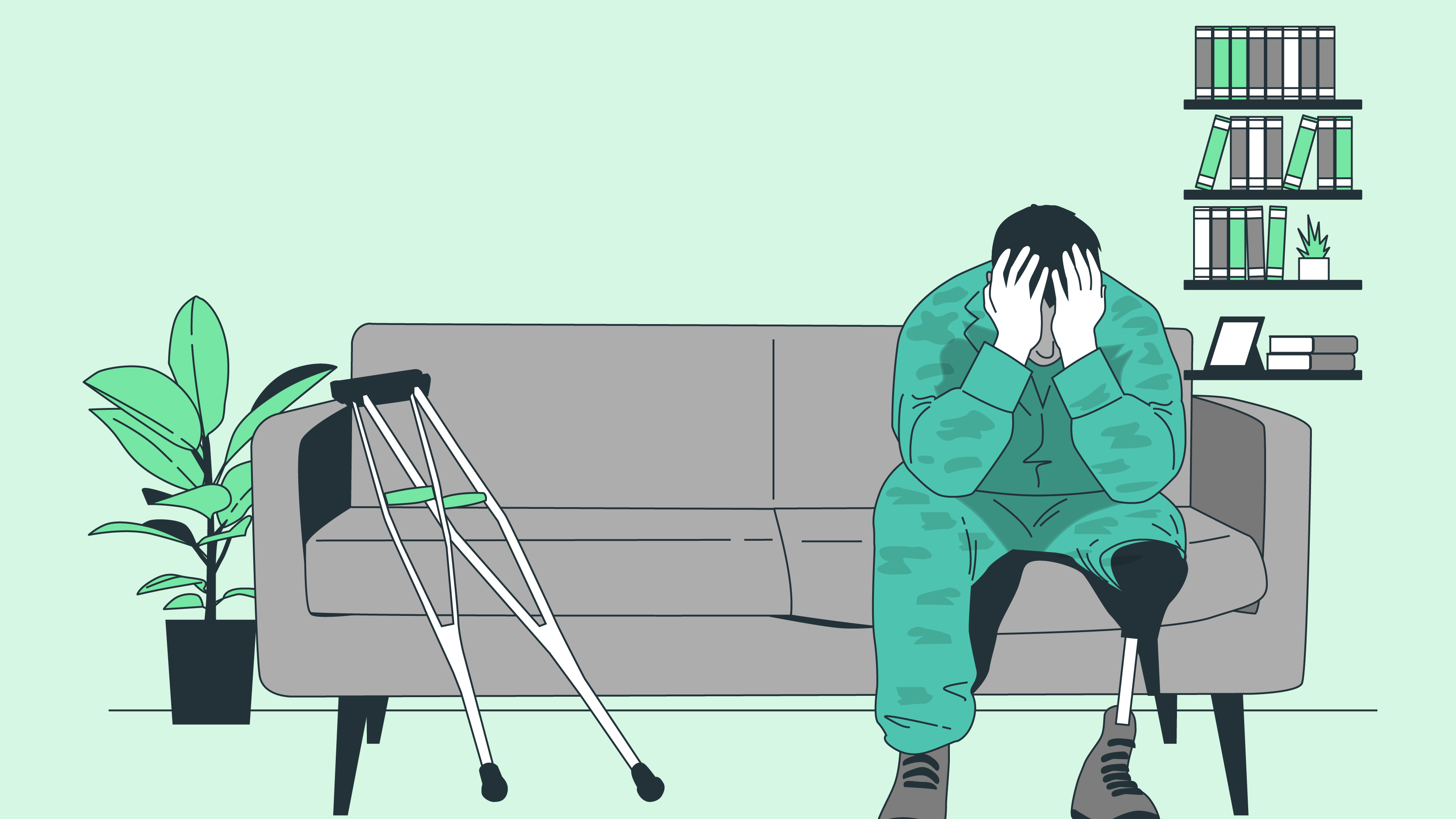
Introduction
Anxiety episodes, sometimes known as panic attacks, are one powerful way that anxiety, a common aspect of the human experience, can appear. These events require detailed comprehension because of their overpowering and scary sensations. This thorough book aims to analyse the complex nature of anxiety attacks, providing light on possible origins, symptoms, and—above all—insights on practical coping mechanisms and competent management techniques for these severe and upsetting bouts.
What Is An Anxiety Attack?
An Anxiety Attack is characterised by a sudden and severe surge of dread or panic that might persist for several hours or even minutes. Oftentimes, stress, certain situations, or apparently unrelated events trigger its abrupt development. When having an anxiety attack, people experience a wide range of upsetting symptoms, from emotional difficulties like a debilitating sensation of dread to physical ones like shortness of breath and a fast heartbeat.
Read More – Collagen
Cognitive symptoms exacerbate the anxiety, such as racing thoughts and a detached mood. This collection of symptoms encapsulates the deep and disconcerting aspects of an anxiety attack, leaving sufferers struggling with the unpredictable nature of their own feelings and responses.
Common Symptoms of Anxiety Attacks
Physical Symptoms:
a. Rapid heartbeat: The fight-or-flight reaction causes the heart to speed in anticipation of danger.
b. Breathlessness or hyperventilation: Anxiety causes rapid breathing, which results in hyperventilation and increased anxiety.
c. Chest pain or discomfort: Similar to the symptoms of a heart attack, chest tightness adds to worry.
d. Sweating: Excessive sweat is a frequent anxiety reaction, assisting the body’s attempt to settle down.
e. Trembling or shaking: a body tremor caused by an adrenaline rush during worry.
f. Dizziness or lightheadedness: Adding to the uncertainty and panic of an anxiety attack.
Emotional Symptoms:
a. Overwhelming panic, disproportionate to circumstances, gives a sense of imminent tragedy.
b. Loss of control: Anxiety causes a profound sense of loss of control, exacerbating emotional pain.
c. A persistent feeling of dread contributes to a sense of powerlessness, intensifying emotional pressure.
d. Restlessness or irritability: Emotional upheaval emerges as restlessness or irritation, further complicating the emotional landscape.
e. Strong desire to escape the circumstance: Anxiety attacks are accompanied by a strong urge to depart the situation.
Cognitive Impairment Symptoms
a. Racing thoughts: A flurry of uncontrolled ideas obstructs attention and mental clarity.
b. Difficulty concentrating: Anxiety interferes with concentration, making it difficult to stay focused.
c. Separation from reality: A persistent sensation of separation from one’s surroundings or unreality adds to the bewilderment.
d. Fear of losing control or going mad: Anxiety creates an illogical fear of losing control, which fuels concern about going insane during an episode.
Causes of Anxiety Attack
Biological Factors
a. Genetics and family history: Inherited susceptibility to anxiety episodes increases, with a family history of anxiety disorders serving as a substantial risk factor.
b. Brain chemistry imbalances: Imbalances in neurotransmitters such as serotonin and dopamine lead to anxiety attacks, affecting mood regulation and emotional well-being.
c. Medical diseases such as thyroid disorders: Disorders such as thyroid dysfunction can exacerbate anxiety, emphasising the interdependence of physical and mental health.
Environmental Factors:
a. Chronic stress: Prolonged exposure to stressors increases the chance of anxiety episodes, underscoring the influence of environmental stresses on mental health.
b. Traumatic experiences: Past traumas considerably enhance sensitivity to anxiety episodes, emphasising the long-term impacts of psychological discomfort.
c. Substance abuse: Substance addiction exacerbates anxiety symptoms by disturbing neurotransmitter balance, increasing the likelihood of anxiety episodes.
Psychological Factors:
a. Personality qualities (e.g., perfectionism): Personality traits like perfectionism increase anxiety sensitivity, producing a persistent source of stress.
b. Chronic concern or excessive fear: persistent negative thinking patterns contribute to anxiety episodes, emphasising the relevance of cognitive variables in anxiety sensitivity.
c. Past traumatic experiences or abuse: Psychological scars from trauma increase the incidence of anxiety attacks, emphasising the significance of managing unresolved emotional anguish.
Coping Strategies and Management Techniques:
Deep breathing and Relaxation Techniques:
a. Use diaphragmatic breathing to activate relaxation while decreasing physiological symptoms of anxiety.
b. Progressive muscular relaxation: Release muscle tension in a systematic manner to enhance general relaxation and relieve physical stress.
c. Mindfulness meditation: Develop present-moment mindfulness to detach from anxious thoughts and lessen the severity of anxiety episodes.
CBT stands for Cognitive Behavioural Therapy.
a. Recognise and reframe mistaken ideas to reduce the emotional burden of anxiety.
b. Develop practical coping techniques for stressful situations. Develop practical coping methods to manage stress, minimising the risk of anxiety episodes.
c. Gradual exposure to anxiety stimuli: desensitise to anxiety triggers in a systematic manner, strengthening resilience and decreasing anxiety response intensity.
Habit Changes:
a. Regular exercise: Physical activity produces endorphins and helps to control stress, enhancing mental balance.
b. Adequate sleep: prioritise quality sleep for brain repair and greater emotional resilience.
c. Eat a nutritious diet and limit caffeine and alcohol intake to promote overall well-being and reduce anxiety triggers. Implementing these approaches allows for successful management and long-term well-being.
Medication:
a. Antidepressants or anti-anxiety medications: These are medicines provided by doctors to modulate neurotransmitters, providing relief and preventing anxiety attacks.
b. Beta-blockers: Reduce the influence of adrenaline on physical symptoms, such as fast heartbeat caused by anxiety episodes.
Obtaining Professional Assistance:
a. Seek the advice of a mental health professional: Learn personalised tactics and coping skills that address the fundamental causes of anxiety.
b. Group therapy: Attend meetings for mutual support and understanding, and learn from others who have faced similar issues.
c. Crisis helplines: In times of extreme distress, immediate aid is available.
V Making a Personalised Anxiety Management Plan:
Identify Triggers:
a. Keep a journal. Record when and where anxiety episodes occur in order to pinpoint particular triggers.
b. Recognise patterns: Increase awareness by spotting recurrent patterns and commonalities.
Create a Support Network:
a. Share experiences: Be open to trustworthy people for a supportive atmosphere and understanding.
b. Educate people close to you: Inform loved ones about anxiety attacks so that they may provide an informed and sympathetic support system.
Develop Healthy Habits:
a. Prioritise self-care: Nurturing physical and emotional well-being adds to resistance against anxiety episodes.
b. Establish achievable targets and appropriate boundaries to lessen stresses.
c. Recognise modest accomplishments: Recognise progress to promote positive behaviour and increase confidence.
Self-Evaluation on a Continuous Basis:
a. Track progress: Evaluate anxiety management efforts on a regular basis to fine-tune techniques and find areas for improvement.
b. Modify strategies: Modify coping techniques as needed to maintain efficacy.
c. Recognise accomplishments and learn from setbacks: Recognise accomplishments and learn from setbacks to promote resilience in anxiety management.
Conclusion
Finally, understanding and regulating anxiety attacks is a complex process that involves physical, emotional, and cognitive components. This comprehensive book digs into the nature of anxiety attacks, their symptoms, and their causes, shedding light on the complex combination of biological, environmental, and psychological factors.
Read More – HEAL FROM WITHIN: EFFECTIVE STRATEGIES FOR MANAGING ANXIETY DISORDER
Individuals can develop their own anxiety management approach by researching coping strategies such as deep breathing, cognitive-behavioral therapy, lifestyle changes, and professional aid. Overcoming anxiety necessitates self-awareness, tenacity, and a supportive network, which eventually leads to enhanced well-being and a more empowered approach to dealing with life’s difficulties.
Read More – Panic Attacks



